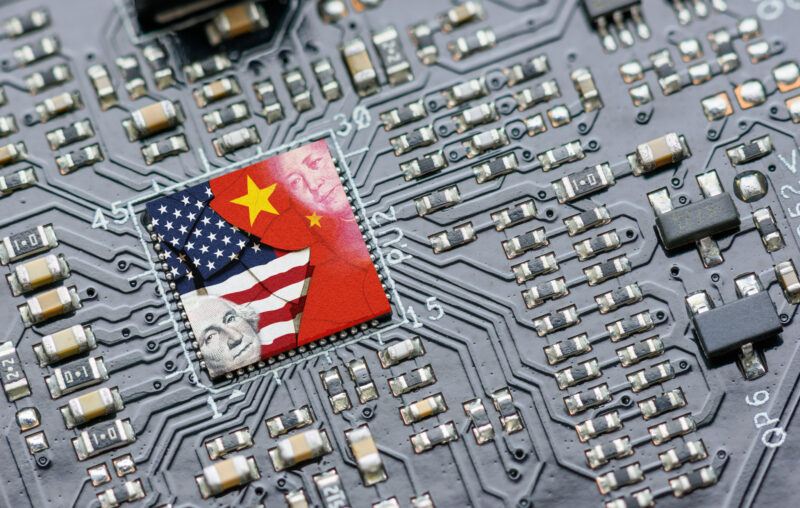The CHIP Act Is a Blip

On this day in 1947, three researchers at Bell Laboratories created the first transistor, the little components that act as switches in integrated circuits, controlling the flow of electricity through layers of semiconductor materials. 75 years later, transistors are mind-bogglingly ubiquitous (you very likely own hundreds of billions of them) and inconceivably tiny.
Humanity now produces more transistors each year than we do grains of rice and wheat combined. Even for a retail consumer, 125,000 transistors now cost less than one single grain of rice, and take up less space. Over 100 million trillion new transistors roll out every year, ranging from the textbook-simple ones to the staggeringly sophisticated ones. Transistors, these tiny switches, are bundled by the billions onto computer chips smaller than a dime.
How then, can we be in a global semiconductor chip shortage that’s shaking the future of blue chip companies?
If you’ve tried to make a purchase recently, anything from a new car to a laptop to a washing machine, you’ve likely felt the pinch of the supply shortfall. Any product relying on semiconductor chips is likely to be delayed, limited, or just plain unavailable. General Motors earnings slid 40 percent earlier this year, as nearly 95,000 vehicles languished for want of this or that semiconductor chip. Semiconductor shortages delayed the production of as many as eight million vehicles. While carmakers were hit by the shortage first, Goldman Sachs estimates 169 industries have been impacted. Sony couldn’t produce enough PlayStation 5 consoles to meet day-one demand. Apple and Samsung scrambled to find the chips suitable for LED backlighting in their tablets and laptops
The handful of global firms that can produce finished chip products are straining to meet demand. Backlogs happen quickly, but take a long time to resolve, and that’s happening at multiple choke points in the supply chain. Firms that embed chips in their products kept around a 40-day supply on hand in 2019. That inventory crashed to less than five days in 2021, according to a Commerce Department report.
The $550-billion-dollar global semiconductor market is highly concentrated in Asia, where 87 percent of chip production is based. Taiwan alone produces 63 percent of global supplies, which even before recent, renewed tensions with China, made US firms nervous. Demand has been further accelerated by ever-more-chip-intensive products like electric vehicles, 5G devices, and gaming consoles.
COVID-related shutdowns in Taiwanese factories caused noticeable dips in global supply, at a time when people all over the world, forced to work and entertain themselves from home, were ordering new electronics. Like manufacturers of many other goods, chipmakers and end-users scaled back production, anticipating depressed sales. But demand unexpectedly boomed.
Politicians rushed to (be seen to) reinforce American manufacturing, both as a matter of strategic output (production of goods domestically) and of employment (millions of workers employed in industries that could be shut down by supply shocks). The near-invitable subsidy bill was the CHIPS and Science Act of 2022 (a backronym for Creating Helpful Incentives to Produce Semiconductors for America).
Chip fabrication plants require long lead times to build (up to five years) and cost billions of dollars. The less-sophisticated plants that make less-sophisticated chips have lower profit margins, and the most sophisticated ones are not only staggeringly costly to construct, but to run and staff.
American companies didn’t need Washington’s encouragement to bring manufacturing back from the outsourcing enthusiasm of the 1990s. American-born companies were already investing in chip production on US soil. Industry-leading Micron Tech broke ground on a $15 billion new plant in September, near its 40-year headquarters in Boise, Idaho. In January, eight months before the CHIPS Act’s signing, California-based Intel announced what may be the world’s largest chip fabrication facility on 1,000 acres of suburban Ohio.
American chip designers are independently motivated to reclaim semiconductor manufacturing from the dominance (and potential volatility) of Asian suppliers, now that the unseen costs of offshoring’s savings can be acutely felt. Chip designers’ reinvestment preceded any such government signal, and its budget for that factory alone dwarfs the CHIPS Act’s investment. Still, future campaigns will be quick to claim credit for revitalizing the industry.
Bringing semiconductor manufacturing back to American soil may be a wise strategy amid rising global tensions. To be sure, much of America’s vulnerability to Asian fluctuation is self-imposed. In 2021, the Treasury Department and Commerce Department sanctioned major Chinese technology firms for their alleged participation in the Muslim Uyghur genocide, and extralegal biometric surveillance, triggering backlash. In 2022, the Biden administration imposed unprecedented export controls barring most shipments of advanced chipmaking technology and equipment from US firms to Chinese buyers. For the many Americans who work in Chinese chip firms often in top leadership positions, ithe move was a stern warning: Your private economic activities may interfere with our idea of the national interest. Some Chinese firms laid off Americans in retaliation. It wouldn’t be out of line to believe that some of these expats (both Chinese workers in American plants and American workers in Chinese plants) had some expertise and skills that might, if not derailed by White House edict, raise production and improve efficiencies across the industry.
Even with the facilities to manufacture chips domestically, production depends on the availability of relatively scarce and labor-intensive rare earth elements (cerium, neodymium, samarium, europium, and a dozen more). China once dominated production of these metals to the tune of 97 percent market share in 2011. Since, amid rising concerns about dependence on Chinese materials (used to control not just PCs and phones, but wind turbines, weapons guidance systems, power plants, and other strategic assets), that control has tumbled to around 70 percent. The United States still strictly limits domestic mining and processing of these metals deposits of which do exist here, mostly due to environmental concerns, although establishing an “end-to-end supply chain” on US soil has been touted as a long-term goal.
Like chips themselves, the facilities for mining these metals (then refining them, alloying them, and disposing of the waste) are time- and capital-intensive to build, and difficult to sustain in non-shock periods where margins on chip production may be quite low. What’s more, the production technologies in this field age exceedingly quickly, which means a state-of-the-art facility, without constant reinvestment, may be outmoded within a decade. Whether for strategic, political, or economic reasons, long-term federal subsidy of such plants seems almost inevitable.
One thing is clear: We will continue to find ever-more uses for these chips, especially as they are smaller and more affordable. In 1965, Gordon E. Moore, the co-founder of Intel, predicted that the density of transistors on a microchip would double every two years, a maxim now known as Moore’s Law. He has been proven largely correct, not only on the sophistication of electronic devices, but that this proliferation would make devices smaller, faster, more powerful, and cheaper over time. For producers of chips, the falling price has not been an unalloyed blessing. The veracity of Moore’s Law was predicted to wane in the 2020s, because of physical constraints like heat generation. Even the size of atoms themselves may become a barrier. Intel’s latest chip (still in development) is seven nanometers, or around twenty atoms (depending on the atom) across. Human ingenuity is limited only by physics — until we transcend that, too.
All 2.9 million “smart tickets” to the current World Cup are fitted with RFID chips, each composed of up to 40,000 transistors, printed on thinner-than-paper foil and accessible to remote scanners. Millions of medication vials now contain chips that report their temperature and condition back to manufacturers, to ensure they are not damaged in shipping. Florida State University recently encoded chips onto their complex physical filing system, so office workers could seek a file without searching the stacks. Your local library and retail store use chips not only in their computers but attached to every book and item. RFID trackers mark thousands of distinct parts in our defense logistics systems, allowing contractors to handle, repair, and transport equipment without actually removing them from the military’s inventory. Chips enhance security on our credit cards, bring home our lost pets, regulate our pacemakers.
In three-quarters of a century, the transistor went from a prototype in a cutting-edge commercial lab into virtually every American home — by the billions — on the power of supply and demand. While vendors cope with shortages and difficulty meeting demand, there is a political appetite to “solve this crisis.” But over time, as logjams resolve and prices stabilize, attention will turn to other things, and the semiconductor industry will not just soldier on, but will continue to expand, so quietly and seamlessly that most of us will never notice. The “help” government can offer, whether in subsidy or trade embargo, legal protection or official sanction, will be just one more rogue factor absorbed by the fast-shifting industry. The political proposals will be flashy and brief. The market forces making every chip, and powering our modern world, operate on a much longer timeline.










